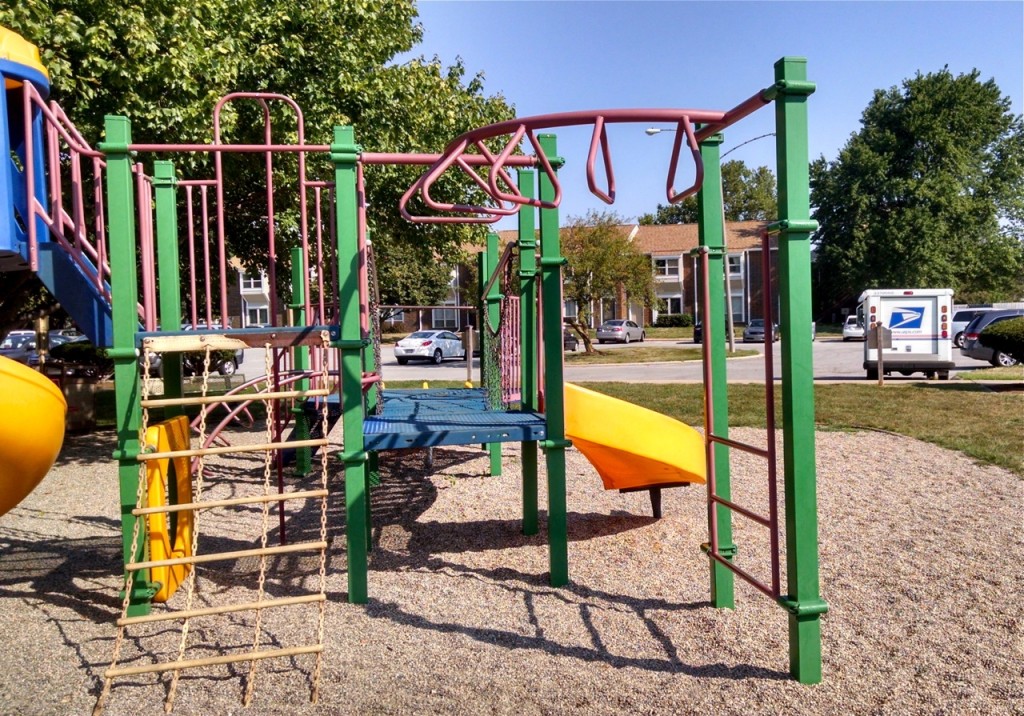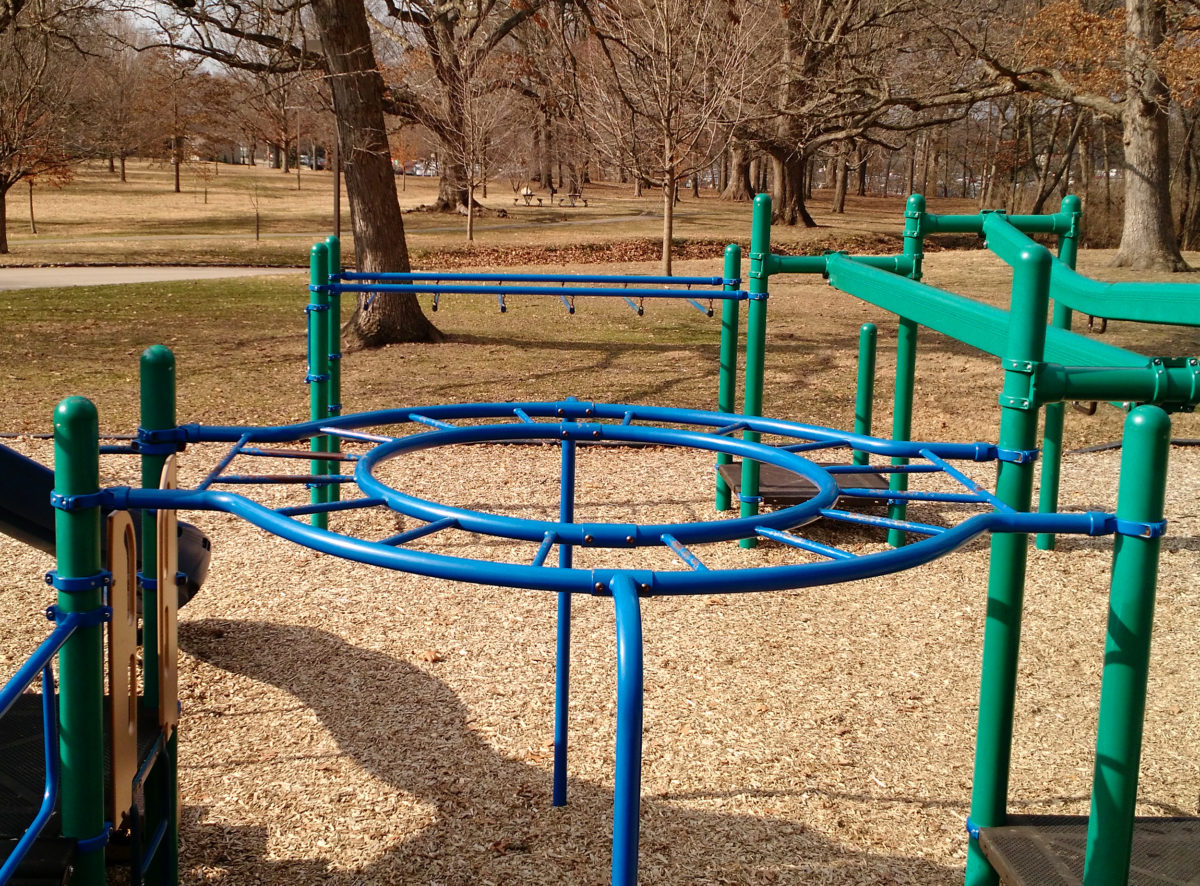I used to play on the monkey bars all the time when I was a kid. My mom encouraged it. She knew it built upper-body strength, and that the ability to traverse monkey bars was an important capability for any human. (She could traverse monkey bars herself, when I was a boy.)
I quit doing the monkey bars, probably when I was college age, and quickly lost the capability. Then for three decades would have been afraid to even try, because I’d definitely have hurt myself. A few years ago I wanted to regain that capability, so I started looking for monkey bars to practice on, and found that they’ve gotten quite scarce. Many playgrounds don’t have them at all.
Winfield Village has a playground in every quad, but the only playground with any sort of monkey bars is the big one close to the office, and it has a rather strange curving monkey bar that over the course of 5 rungs makes a 90° turn—a particularly challenging version. (Like most these days, this one has weird triangular bars hanging from a single support, rather than a series of rungs supported on both sides.)

The reason for both the near disappearance and the switch to triangular bars seems to be that monkey bars are “dangerous.” Many playground safety experts recommend that monkey bars be excluded from playgrounds altogether, and I think the weird shape is designed to make them harder to climb on top of, in the hopes that kids would then not do so.
I spent a chunk of yesterday afternoon at an “alignment play day” with folks from CU Movement (and kids), getting some hanging and balancing and barefoot walking on various textures. One thing I did was traverse the monkey bars at Clark Park in Champaign—an old-style set of monkey bars, rather like the ones I remember as a kid.
One of the kids in our group—small enough that it was a challenge to reach the next bar, and at a height that the experts would no doubt claim was “too high” for a kid of that size—did the monkey bars, and then immediately wanted to climb on top of them. He asked for help getting on top, which his mom declined to provide—except that she pointed out that one of the supporting poles could probably provide the necessary foot purchase for him to get on top on his own. And he did manage to find two ways to get up there. Having gotten up there, he decided against traversing the top of the monkey bars, and simply swung back down under them.
A new school of thought is emerging (finally!) that “dangerous” playground equipment offers valuable opportunities for kids to do exactly what this boy did: evaluate a hazard and decide how much risk was appropriate. The only way to learn to make that sort of evaluation is to actually practice it. Making playgrounds so safe that children cannot hurt themselves reduces their opportunity to develop a good sense for what is safe and what is dangerous, and what is and is not within their capability.
It has also made it a lot harder for me to find a set of monkey bars to practice on.
I crossed the monkey bars three times in the afternoon, but I forgot to attempt my next big trick: Cross from one end to the other, turn around (without putting my feet down) and cross back again.
I’ll do that next time.


Love this! Can I re-post it on my blog, LetGrow.org (formerly FreeRangeKids.com)?
Yes! This post in particular I think would benefit from just that sort of wider exposure.
I’m commenting on your March 19th post “The opposite of dyslexia.” I had always thought that dyslexia primarily had to do with seeing letters incorrectly because of their orientation (for all the non-letter physical objects that we look at, p and d, for instance, would be the same because you can rotate one to create the other). But when I looked it up, dyslexia is defined as any reading difficulty with normal intelligence. So based on that definition, having initial difficulty in learning to read would be categorized as dyslexia. In any case, I don’t think it’s specific to the ability or lack thereof to use whole-word reading.
It’s true that “dyslexia” is a term that covers a wide range of conditions, but I think an inability to move to whole-word reading is a major instance of what we call dyslexia.
In any case, my blog is mainly about me, and I was mainly interested in my own inability to make sense of phonics, a concept that I never really understood until I was an adult, and that daunted me while learning to read (until I made the jump to whole-word reading on my own).
As an aside, I also always had trouble with the rotatable letters—I had to (sometimes still have to) write the letter down and look at it to remember which is b and which is d.
Thanks for your comment!